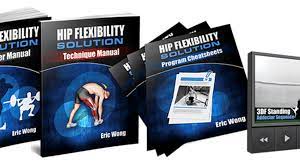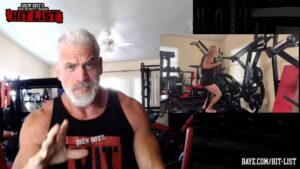(This course is available for immediate delivery!)But I’m obsessed with the body and how to get it feeling and moving better, so I’m always studying and experimenting and I’d be doing you wrong if I didn’t come clean so you don’t suffer the consequences from following this common method.File Size:5.79 GB Format File: 86 MP4, 14 PDF
Eric Wong – Hip Control
Neglecting These 3 Muscle Groups in Your Training Makes You Stiff and Tight and Creates Muscular Imbalances that Produce Nagging Pains that Seem to Never Go Away
Hey, Coach E here and what we’re about to discuss is going to FLY IN THE FACE of some of the most popular concepts in fitness and working out over the last few years…
That’s right – if you’ve been following this advice, you’ve been messing up your body.
You might’ve heard these concepts from some of the biggest websites, magazines and trainers and you might get pissed off when you hear what’s up.
And you’ve got every right to be!…
Here’s the EMBARRASSING part – I’ve been one of the trainers sharing the very same advice I’m about to admonish.
Yep, I guess my wife is right – I don’t know everything.
But I’m obsessed with the body and how to get it feeling and moving better, so I’m always studying and experimenting and I’d be doing you wrong if I didn’t come clean so you don’t suffer the consequences from following this common method.
No, I’m not talking about any of that stupid stuff you see on infomercials designed for the sole purpose of parting you from your hard-earned money…
What we will talk about is a concept that’s moved the fitness industry in the right direction and proved beneficial to both athletes and people working out to be fit and healthy alike…
The problem is dysfunction, pain and injuries are likely to occur over time – not immediately – because this method of training is BIOMECHANICALLY IMBALANCED.
How This Popular Fitness Concept That Creates Imbalances In Your Body Came To Be…
I learned about this method from my first mentor in the fitness industry named Paul Chek…
From 2005-2007, I invested around $10k in books, courses and intensives to learn as much as I could from him.
That was after around $40k for a 5 year honours degree in Kinesiology lol!
While common today, Paul was the first person I’d ever heard talk about creating resistance training programs based on something called the MOVEMENT PATTERNS, instead of bodybuilding style body part training (chest, bi’s, quads, abs, etc).
Paul’s system included 7 distinct movement patterns: squat, lunge, bend, push, pull, twist and gait.
I quickly implemented the system and found it to not only improve fitness and performance, but also EFFICIENCY, as it requires less time in the gym.
This was especially beneficial to the combat athletes I trained who were already in the gym 2-3 hours, 6 days a week.
Over the next few years, training based on “movements not muscles†became more and more popular with many other teachers promoting it including Gray Cook, creator of the Functional Movement Screen (FMS).
It was in 2008 when Men’s Health released a book called “The New Rules of Lifting†that the concept officially went mainstream.
Since then, the trend has only grown stronger with the growth of powerlifting, weightlifting and the explosion of CrossFit, which all focus on these same exercises and movement patterns.
Here’s The BIG Problem Focusing on Lower Body Compound Exercises Like Squats and Deadlifts and Always Being Told to “Squeeze Your Glutes!â€
​While each of these movements focuses on the muscles in your body in a different proportion, they’re all essentially the same in that they train the muscles that make you stand up against gravity.
It doesn’t matter whether you’re doing a front vs back squat, stationary vs walking lunge or stiff-leg vs trap bar deadlift – you’re essentially training the same joint movements: hip extension, knee extension and to lesser extent, hip abduction and external rotation.
These exercises also work virtually the same muscles: the gluteus maximus, quadriceps and to a lesser extent, the hamstrings and gluteus medius.
So by following this system (not to mention the popular cue telling you to “squeeze your glutesâ€) you’re training the same movements and muscles while neglecting their opposites, creating muscular imbalances that ultimately lead to dysfunction, pain and worst of all – INJURY.
Archive: https://archive.ph/dBiIa#selection-509.0-559.276
Get immediately download Eric Wong – Hip Control








